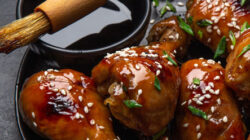Why Ramen is More than A Bowl of Noodles
Noodles and I go way back. From the first time I had a bowl covered with my mom’s rich, meaty tomato sauce, I was smitten. I can eat them anyway shape or form and have. Back in college at Mizzou, ramen noodles always accompanied my late night study sessions. Inexpensive, filling and immensely satisfying, ramen noodles evoke memories of hard work and small budgets.
Years later (and I won’t reveal how many), my palate has improved but I still enjoy occasionally slurping through a steaming cup of ramen noodles. While I have been experimenting in the Nikken kitchen with umami or kokumi (Komi™), chefs in Philadelphia, Miami, Chicago, Austin, and of course LA and New York have been embracing their own culinary pasts and are opening up ramen noodle shops galore. In fact, Food and Wine and Cooking Light have each claimed ramen noodles as a major food trend for 2013. And ramen noodles are no longer MSG-laden and Pan-Asian based anymore…there’s Tex-Mex versions with chicken tortilla and Sapporo beer bacon miso or Meyer lemon shoyu.
You know the expression “everything isn’t what it seems”? Well, ramen noodles wear a mask of simplicity but are actually the end result of hours of labor.The two basic components are the noodles and the broth. Whether made by hand in the restaurant or ordered from Japan, noodles for ramen are meant to be quickly immersed in the broth and slurped immediately to avoid becoming too soft.Many ramen shops don’t offer carryout because of this. You want to eat them while they are slightly firm.
While ramen itself means “noodle”, the broth is what allows the noodle to shine and differs from dish to dish and chef to chef. And many broths there are – from shoyu to tonkotsu (pork bone based) to miso-based broths, the broth is the velvety base of ramen and showcases the ingredients on top. Some broths simmer for as many as 60 hours (as is the case at Ramen Tastu-Ya in Austin, TX) and there are restaurants like Hanjan in New York City that serve ramen only after the broth is complete, sometimes as late as 10pm. So, you see that this simple dish has complex origins.
Experimenting with food is what makes my job at Nikken so fun. While we wait for St. Louis to climb aboard the ramen noodle train, I have been inspired by my past and the ramen noodle craze to create flavorful broths in the Nikken kitchen. From Komi powder to soy sauce powder (or both!), Nikken’s ingredients are perfectly matched for ramen!

